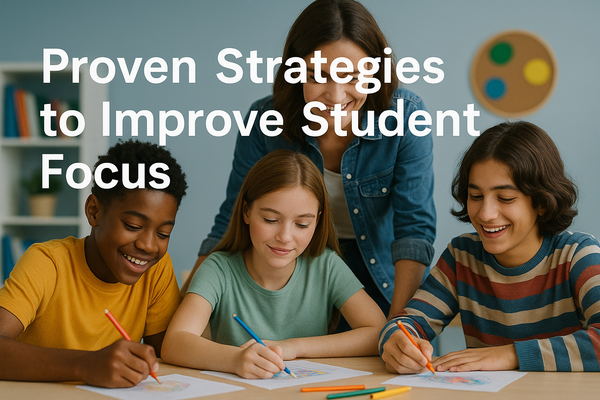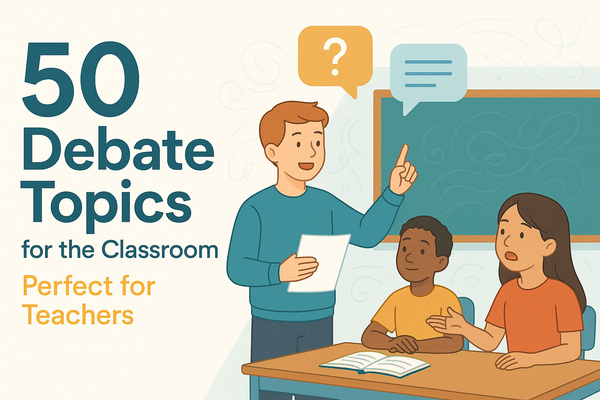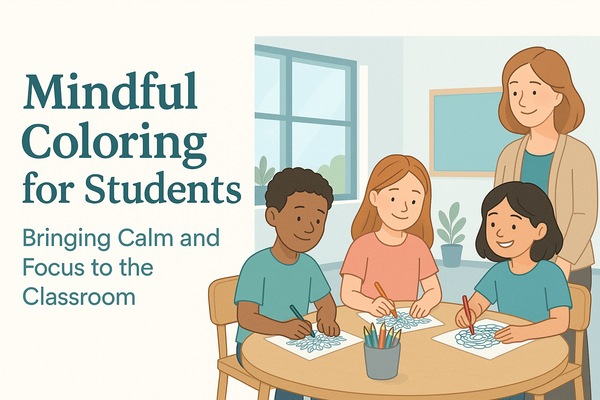Elevate Your Teaching: 7 Strategies for Engaging Lesson Plans

Creating lesson plans that inspire and excite students is not only about covering the curriculum; it is more about sparking curiosity and a love for learning. This task is most challenging for primary school teachers, as it is hard to find ways to engage young minds. However, the right strategies can transform the learning experience by making each topic come alive. This blog will discuss seven strategies for creating engaging lesson plans.
Essential Elements of an Engaging Lesson Plan
An engaging lesson plan should have the following elements.
Learning Objectives
Make sure your lesson plan has goals that follow the SMART criteria - Specific, Measurable, Achievable, Relevant, and Time-bound. Instead of saying, “learn about global warming”, try to “identify and explain the causes of global warming by the end of the lesson.” This will clarify what the entire class is working toward and track the progress.
Introduction
The beginning of the lesson sets the tone, so start with a hook that sparks curiosity in students. This introduction can be a question, a thought-provoking statement, or an interesting fact. An engaging introduction should be a part of an engaging lesson plan.
Interactive Activities
When students are actively participating, learning becomes a fun and memorable experience. Incorporate activities that require students to initiate conversations. You can make every lesson interactive by incorporating fun in a different way.
For example, in a history lesson, you can invite students to take on the roles of historical figures. Similarly, in science class, a hands-on experiment allows students to observe concepts. These interactive activities aim to shift students' focus from passive listeners to active learners.
Visual Learning Tools
Make sure you add visually appealing tools for students to make lesson plans engaging and accessible for students. By presenting information visually, you can enhance comprehension and accommodate different learning styles.
Formative Assessments
Formative assessments throughout the lesson help gauge students’ understanding as they progress. These assessments can take the form of short quizzes, quick questions, or observation during activities. Frequent assessments allow you to adjust instruction as needed and ensure that all students are on track.
Closure
Concluding a lesson effectively is equally important as it reinforces learning. This can include summarizing key points and asking students to reflect on what they have learned. An effective closing helps students consolidate information and boosts retention,
Feedback
Gathering feedback from students or reflecting on the lesson afterward can help you make improvements for future lessons. Evaluating each lesson helps identify what worked well and can be refined for future lessons, contributing to more engaging lesson planning.
Each of these elements contributes to an educational and engaging lesson plan. You can customize these lesson plans by adding elements that suit your teaching style. We have also covered sample lesson plans so you can get an idea of what an engaging lesson plan can look like.
7 Effective Tips for Creating Engaging Lesson Plans
We have covered seven strategies for you that will help you in creating an engaging lesson plan.
1. Begin with Focused Learning Goals
As discussed, the main element of an engaging lesson plan is a set of clear learning goals, so you should take time to define exactly what you want students to accomplish. These goals guide you to shape the structure and content of the lesson.
Align your goals with measurable outcomes to ensure that they are achievable within the lesson’s timeframe. The clarity will not only help you track lessons but also help students understand what they are working on and why it matters.
2. Integrate Visual Learning Tools
Visuals and multimedia have become powerful tools for teachers to enhance both understanding and engagement. Imagine getting a lesson delivered through a 3-D simulation; it will make complex concepts accessible and memorable.
Using videos and graphics, you are allowing students to engage with the learning material in dynamic ways. Multimedia can turn abstract topics into a reality, making learning a memorable experience for all students and making retention easier.
3. Connect to Existing Knowledge
A great way to start a lesson is to link it to a previous topic that students already know. By drawing this connection to previous knowledge, you can bridge the gap and learn new material. Try starting your lesson with an open-ended question or by sparking a quick discussion.
These moments not only make students reflect on what they already know but also prepare them mentally for the new information that is yet to come. This strategy sets a strong foundation for deeper engagement and participation.
4. Encourage Teamwork and Group-Based Learning
Collaboration brings out the best in students, allowing them to learn from each other and build teamwork skills. Design activities that require collective effort, such as group projects, brainstorming sessions, or problem-solving games.
These experiences allow students to share perspectives, practice communication, and develop critical thinking skills. Group activities make lessons interactive, creating an environment where students feel invested in their learning.
5. Incorporate Technology
Incorporating technology into your lesson plans opens the door to possibilities of having more interactive and engaging learning. Tools like Teacherbot can help create engaging resources and quizzes that help students learn dynamically.
Blending technology in different ways in the classroom, such as showing videos related to lectures, can create a classroom experience that feels modern and engaging.
6. Maintain a flexible Structure
While structure is also important, a truly engaging lesson plan allows room for flexibility. Start with a clear outline of each lesson stage, but be ready to make changes as needed. By striking a good balance between structure and flexibility, you can keep lessons on track while allowing for spontaneous activities.
7. Integrate Seasonal Themes
Bringing holiday and seasonal themes into lessons is a great way to keep students engaged with the content and make it more relevant to them. Take advantage of special days and add a fun, festive touch to lessons to encourage creativity and excitement.
By incorporating these themes in lessons, you can help students see the practical connection between what they are learning and what the actual world around them holds, making lessons more meaningful.
How to Create an Engaging Lesson Plan with AI Tools?
Creating engaging lesson plans does not have to be time-consuming, especially today, with so many AI tools available. Teachers can generate interactive and personalized content tailored to the needs of their students.
AI Tools can streamline the process of providing you with ready-made templates and offering resources that are aligned with the curriculum. By using AI tools, you can create an engaging lesson plan while focusing on what matters the most, fostering an engaging learning experience for students.
How Far Should You Plan Lessons?
The timing of lesson plans often depends on several factors, including the school’s requirements and your planning preferences. Some teachers prepare lesson plans for just a single day, while some do it for an entire week. The type of lesson plan you create will also influence how far in advance it should be prepared.
Sample Lesson Plans
Here are some creative sample lesson plan templates that you can adapt based on your teaching style and goals.
Sample Lesson Plan 1: Active Learning Focus
A lesson plan focused on active learning should have the following elements.
- Standards & Goals
- Hook Activity
- Whole Group Activity
- Hands-On Exploration
- Formative Check-In
- Small Group Collaboration
- Independent Reflection or Practice
- Wrap-Up Discussion
Sample Lesson Plan 2: Skills-Based Learning
A lesson plan focusing on skills-based learning has a structure following the given or a similar pattern.
- Learning Goal & Skills Focus
- Quick Start Activity
- Skills-Building Exercises
- Main Task with Success Criteria
- Collaborative Review Session
- Reflection & Goal-Setting
Sample Lesson Plan 3: Concept Focused
If you wanna create a concept-focused lesson plan, it should have the following structure.
- Prior Knowledge Activation
- Lesson Topic & Objectives
- Resource Gathering
- Introduce concepts through guided activities
- Group Practice
- Individual Mastery Task
- Exit Ticket Assessment
These adaptable templates provide various pathways to keep lessons engaging, interactive, and aligned with learning outcomes. You can also customize the lesson plans according to your needs and classroom requirements.
Conclusion
Creating engaging lesson plans is more than just structuring activities; it is about bringing curiosity and collaboration into the classroom. It is about making the classroom a dynamic learning space that makes every lesson meaningful and interactive for students. Following the strategies to create engaging lesson plans inspires a love for learning that will stay with students beyond the classroom.




